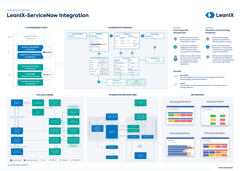What is technology obsolescence?
Technology obsolescence happens when older technology becomes less useful because newer, better technology is available, or when the old version stops being supported, decreasing its initial value and potentially future functionality.
Dealing with obsolete technology involves closely managing its lifecycle — from first use to replacement — and understanding the risks it might pose. Managing the lifecycle ensures that technology supports business needs without causing downtime or security threats.
Obsolescence risk management identifies and addresses the dangers of using outdated technology, from security breaches to operational inefficiencies. Together, these practices help organizations make informed decisions about when to update or replace technology.
📚 Related: Obsolescence Risk Management Solution
Differences between types of obsolescence
- Technology obsolescence: Broadly covers any tech tool, system, or part becoming less useful.
- Technological obsolescence: Focuses on how innovations make previous technologies less efficient or desirable.
- Technical obsolescence: Points to the specs and functions of technology that don't meet the current needs or standards.
- IT obsolescence: Specifically looks at information technology systems and components becoming outdated, which can pose risks to a business's IT setup.
Understanding the different types of technology obsolescence and the importance of lifecycle and risk management can help businesses navigate the challenges of outdated technology.
📚 Related: The What Behind the Technology Obsolescence Management
The importance of addressing tech obsolescence
The significance of managing technology obsolescence cannot be overstated, particularly considering high-profile security breaches that highlight the dangers of neglecting this critical aspect of IT management.

Image: Technology Lifecycle vs. Value & Risk
A poignant example is the widely reported Equifax incident, where a major security breach was attributed to an unpatched vulnerability in outdated software.
This case underscores the dire consequences of failing to address technology obsolescence, including severe data breaches that can compromise millions of consumers' personal information.
📚 Related: The Why Behind the Technology Obsolescence Management
Technology obsolescence risks
Obsolescence poses several technology risks that can significantly impact an organization's operations, security, and financial health.
- Increased vulnerability to cyberattacks: Outdated systems often lack the security features and updates needed to protect against modern cyber threats, leaving organizations exposed to data breaches and malware infections.
- Operational inefficiencies: Older technology can hinder productivity due to slower performance, more frequent breakdowns, and incompatibilities with newer systems or software.
- Compliance risks: Many industries have regulations that require up-to-date security measures. Using obsolete technology can lead to non-compliance, resulting in fines and legal penalties.
- Reputation damage: Failures or security breaches linked to outdated technology can damage an organization's reputation, affecting customer trust and competitive standing.
📚 Related: 5 Legacy Technology Risks
Most common industries facing obsolete technology
Certain industries are more prone to technology obsolescence due to the rapid pace of technological advancements and regulatory changes. These include:
- Healthcare: With evolving medical technologies and strict patient data protection laws, healthcare providers must regularly update their IT systems to remain compliant and efficient.
- Finance and banking: The finance sector is highly dependent on technology for transaction processing, data analysis, and security. Obsolescence can pose serious risks to data integrity and financial stability.
- Technology and telecommunications: Companies in the tech and telecom industries need to stay at the forefront of innovation to remain competitive, making them particularly susceptible to the challenges of obsolescence.
- Manufacturing: Advanced manufacturing technologies like IoT and automation require constant updates to optimize production processes and maintain security.
If you’re part of any of these industries, you might be at higher risk. Prioritize technology updates and investments more effectively. Implement strategic measures to address and prevent technology obsolescence for sustaining business growth and resilience.
📚 Related: 9 Enterprise Technologies That Will Be Obsolete In 10 Years




/EN-Tech-Stacks-Poster_Resource_Page_Thumbnail.png?width=260&height=171&name=EN-Tech-Stacks-Poster_Resource_Page_Thumbnail.png)


